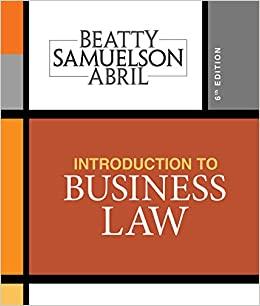

Help with the following questions
Problem 2 (Equity model): Assume that a consumer with only equity wealth must choose period by period consumption in a discrete-time dynamic optimization problem. Specifically, consider the sequence problem: v(To) = sup Fo > exp( -pt)u(c.) 1=0 subject to the constraints: It+1 = exp(r tom - o'/2)(It - c;), up iid and up ~ N(0, 1), G E [0, If], To > 0. Here I, represents equity wealth at period t and & represents consumption at period t. The consumer has discount rate p and the consumer can only invest in a risky asset with expected return exp(r) = E exp(r + ou - o'/2). Finally, assume that the consumer has an isoelastic utility function: u(c) = 17 with y E [0, co]. Note that this utility function has the property of constant relative risk aversion -cu"(c) = 7. u'(c) This homotheticity property enables us to analytically solve this problem. 3 The associated Bellman equation for this problem is given by v(x) = sup u(x - y) + Eexp(-pju(exp(r + ou - o'/2)y). yE[o,x] a. Explain all of the terms in the Bellman equation. Make sure that this equation makes sense to you. b. Now guess that the value function takes the special form v(x) = Note the close similarity between this functional form and the func- tional form of the utility function. Assuming that the value function guess is correct, use the Envelope Theorem to derive the consumption function: c=or. Now verify that the Bellman Equation is satisfied for a particular value of d. Do not solve for $ (it's a very nasty expression). Instead, show that In(1 - 0-4) = _[(1 -4)r - p]+=(y-1)02 c. Now consider the natural log of the ratio of ci+1 and c. Show that Eln = =(r - p) + 302 - 02. d. Interpret the previous equation for the certainty case o = 0. Note that In (941 ) = Alno+1 is the growth rate of consumption. Explain why A In C+1 increases in r and decreases in p. Why does the coefficient of relative risk aversion, y, appear in the denominator of the expres- sion? Why does the coefficient of relative risk aversion regulate the consumer's willingness to substitute consumption between periods? e. (Very interesting optional question for students who want to be challenged and are interested in finance.) Suppose a bond with a sure payoff were added to this economy. Assume the bond pays off & dollars in perpetuity, where & is small. What will the equilibrium interest rate beon this bond? For starters, how will the bond interest rate compare to the interest rate on stocks? Can you derive a closed form expression for the bond interest rate? What is the marginal utility of a marginal sure payoff next period? How much marginal consumption would you give up today to get such a sure marginal payoff tomorrow. We'll come back to this question later in the course. But, for those of you who want a challenge, think about the bond problem now. Problem 3 (True/False/Uncertain): I often give T/F/U questions on exams. Such questions are short and enable me to cover a lot of different topics quickly. That way the coverage of the exam is diversified, rather than being concentrated on one or two long questions. T/F/U questions focus on the key ideas and force you to demonstrate a conceptual understanding. These questions are graded on the quality of your explanation (not on the one-word answer itself). So explain each answer. You may or may not want to use formal/rigorous mathematical proof to support your answer. However, when a statement is false, you'll get full credit only if you provide a counter-example. a. All supremum sequence problems have a unique value-function solution. (Hint: this is true. Why?) b. If the flow payoff function is bounded, then there exists a unique bounded solution to the Bellman Equation. c. Let v(-) be a solution to a Bellman Equation for some dynamic optimize- tion problem. If the flow payoff function, F(, -), is unbounded, then it is always possible to find a feasible sequence of actions such that lim Bo(1.) 70. 1-+00 Hint: this is false. Can you generate a counterexample? In other words, can you generate an example for which the flow payoff function is unbounded, but it is impossible to generate a feasible sequence of actions such that lim,-x. "v(2,) 4 0. d. In the growth problem (problem 1), for any & > 0, there exists a value of T, such that ky 7. Hint: this is true. e. In the growth problem (problem 1), lim,-x 3"v(1,) 5 0










